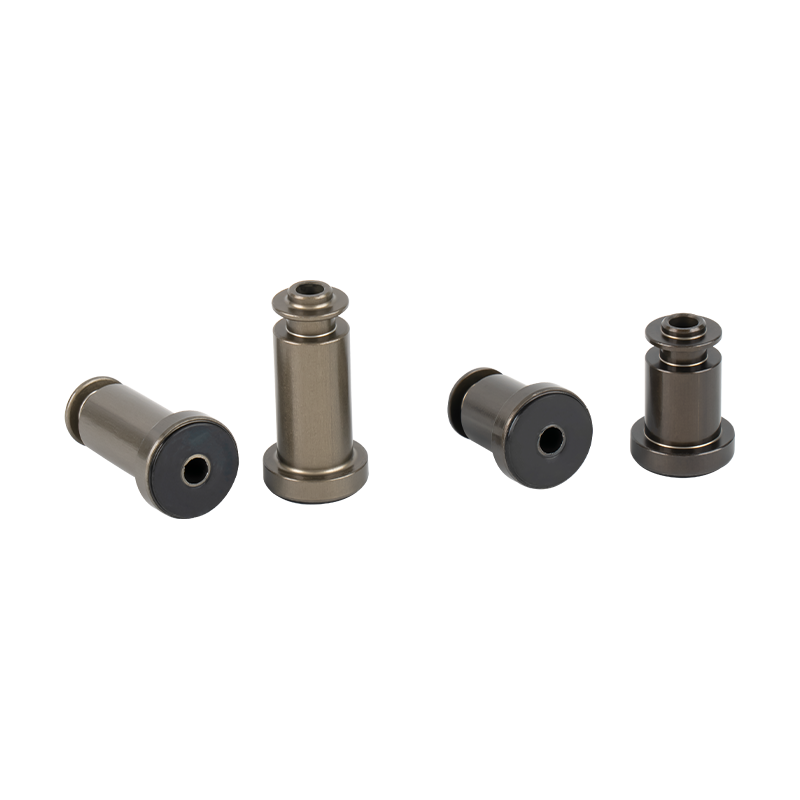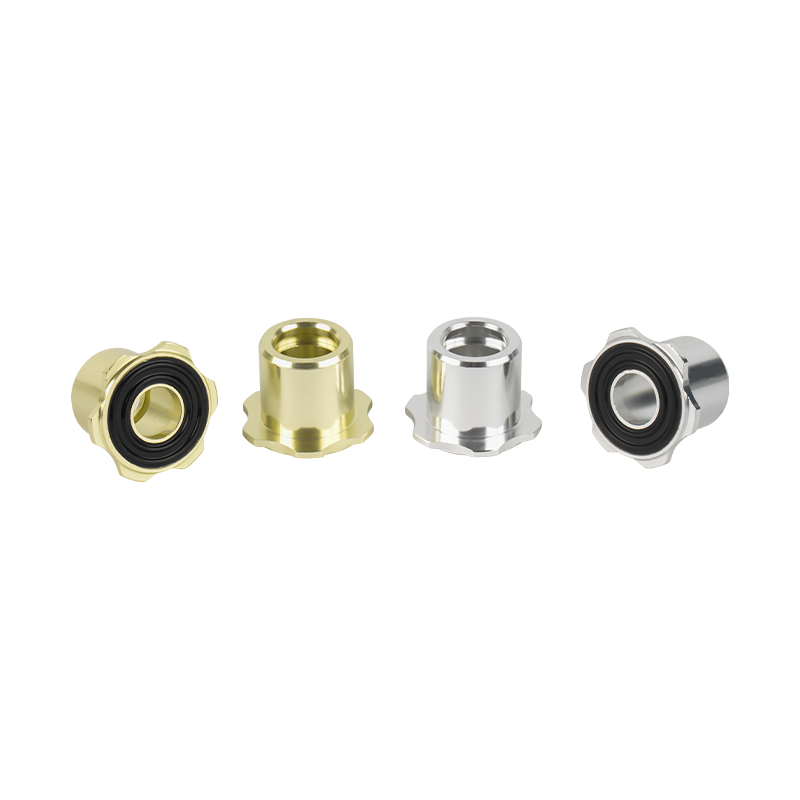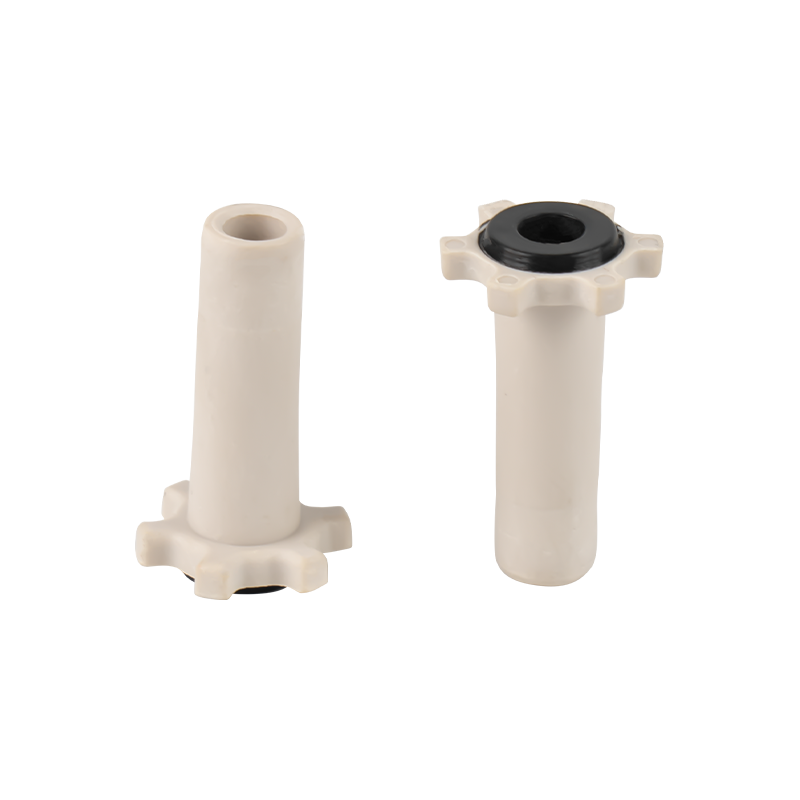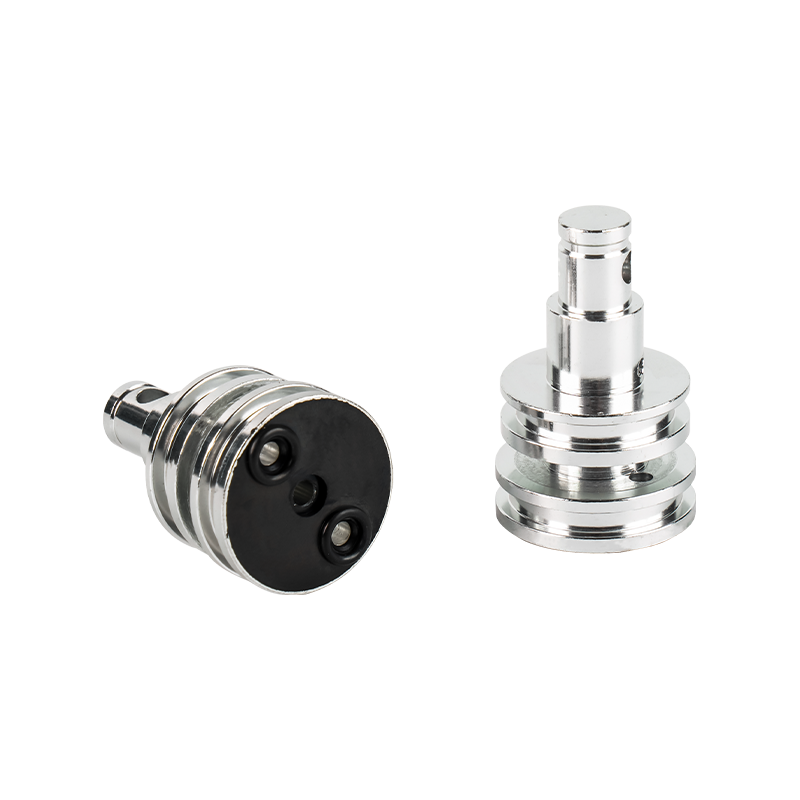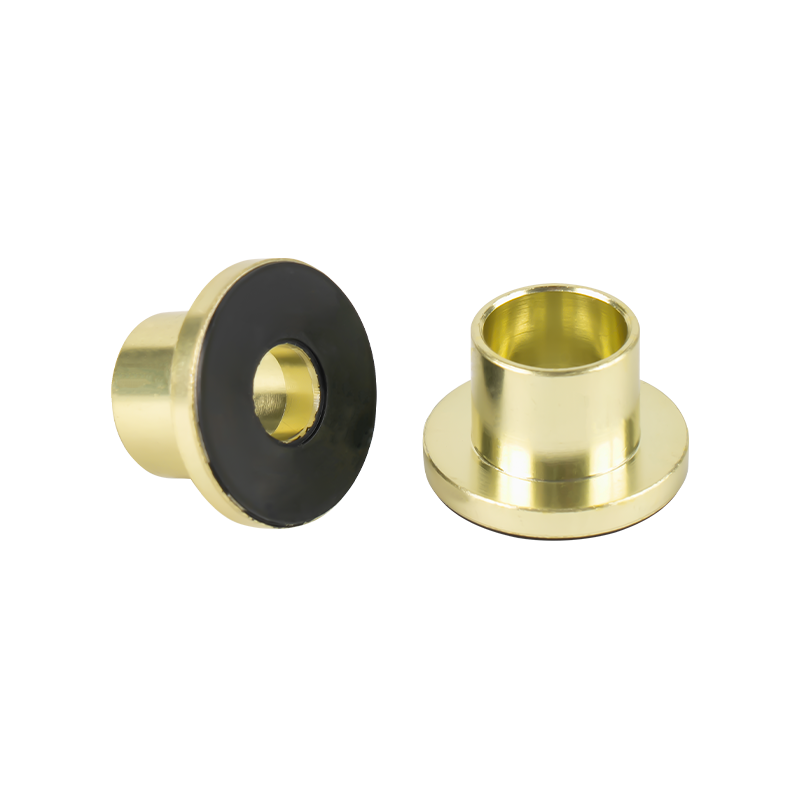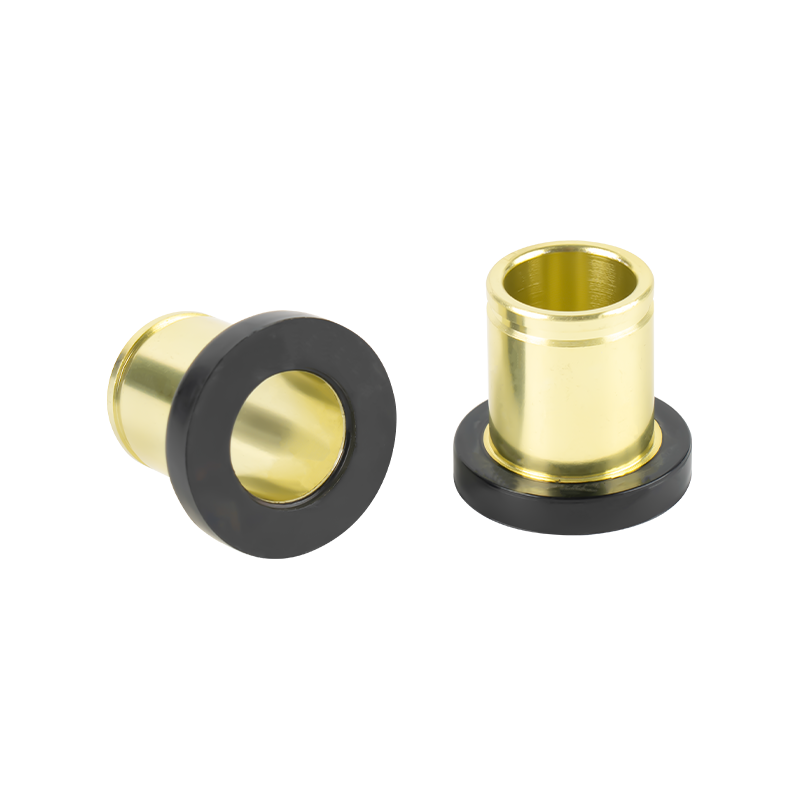A Comprehensive Understanding of Pneumatic Brake Valves: Key Components Ensuring Brake System Safety
2025-08-14
Content
- 1 What is a Pneumatic Brake Valve?
- 2 Functions of Pneumatic Brake Valves
- 3 Types, Design, and Working Principles of Pneumatic Brake Valves
- 4 Applications of Pneumatic Brake Valves in Different Fields
- 5 Relationship Between Pneumatic Brake Valves and Other Brake Components
- 6 Common Faults and Solutions of Pneumatic Brake Valves
- 7 Comparison Between Pneumatic Brake Valves and Hydraulic Brake Valves
What is a Pneumatic Brake Valve?
A Pneumatic Brake Valve is a device that adjusts the pressure of the braking system using compressed air as the power source through mechanical or pneumatic control methods. It is not a single valve but a composite component integrating functions such as pressure regulation, circuit control, and signal feedback. Its core role is to convert the driver's braking operations (such as the force and stroke of pressing the brake pedal) into corresponding air pressure signals, thereby controlling the actions of the brake actuators.
In terms of application scope, pneumatic brake valves are mainly used in heavy-duty vehicles equipped with pneumatic drives, such as heavy-duty trucks, city buses, long-distance coaches, and tractor-trailers. This is because heavy-duty vehicles have greater braking demands, and pneumatic systems can provide continuous and powerful braking force by storing a large amount of compressed air. In addition, pneumatic brake valves are also widely used in some industrial equipment, such as port container cranes, factory forklifts, and mining dump trucks. These devices often work under heavy loads and frequent start-stop conditions, requiring high stability and durability of the braking system, and pneumatic brake valves can just meet these needs.
In the braking systems of heavy-duty vehicles, one important reason why pneumatic braking systems are more widely used than hydraulic systems is the characteristics of pneumatic brake valves. Hydraulic systems rely on hydraulic oil to transmit pressure. Once a pipeline leaks, the braking performance of the entire system will drop sharply, and there are also environmental issues with the recycling and disposal of hydraulic oil. In contrast, pneumatic systems use air as the medium, which is widely available and cost-free. Even if there is a slight leak, the system pressure can be maintained to a certain extent through the continuous air supply from the air compressor, providing better safety. In this system, the brake valve plays a key role, like a precise "switch" and "regulator", responsible for controlling when and with what force the wheel brakes work.
Functions of Pneumatic Brake Valves
The function of a pneumatic brake valve is not a single "braking" action but a complex process involving signal transmission, pressure regulation, safety guarantee, and other links. Each function directly affects the performance of the braking system.
- Providing Compressed Air and Precisely Controlling Pressure: When braking is needed, the primary function of the pneumatic brake valve is to deliver the high-pressure compressed air (usually with a pressure between 0.6-0.8MPa) stored in the air reservoir to the brake chamber as needed. However, this is not a simple "on-off" control but precisely adjusts the air pressure output to the brake chamber according to the stroke and force of the brake pedal. For example, when a truck encounters an emergency on the highway and the driver slams on the brake pedal, the brake valve will quickly open the air intake channel, allowing a large amount of high-pressure air to rush into the brake chamber in a short time, making the brake shoes hold tightly againstthe brake drum with maximum force to achieve rapid deceleration. When braking slowly on urban roads, the driver gently presses the pedal, and the brake valve will output air with lower pressure, making the braking process smooth and gentle to avoid discomfort for passengers.
- Providing "Brake Pedal Feel" for Human-Machine Interaction: "Brake pedal feel" is an important basis for drivers to judge the braking effect, and this feeling is mainly formed by relying on the feedback mechanism of the pneumatic brake valve. The balance spring and piston structure inside the brake valve will react the pressure of the brake chamber to the brake pedal, forming pedal resistance. The magnitude of the pedal resistance is proportional to the braking pressure, that is, the greater the braking force, the stronger the resistance fed back by the pedal. This feedback allows the driver to intuitively perceive the current braking intensity, thereby adjusting the pedal force according to the actual road conditions. For example, when braking on a slippery road, the driver feels through the pedal feedback that the brakes are about to lock up, and will promptly release the pedal and then press it gently to avoid vehicle loss of control. On dry roads, the driver can apply sufficient force according to the pedal feel to shorten the braking distance.
- Dual-Circuit Protection for Safety Redundancy: For vehicles adopting dual-circuit braking systems (most heavy-duty vehicles now adopt this), the dual-circuit pneumatic brake valve is the core component to achieve safety redundancy. The dual-circuit system divides the vehicle's braking device into two independent circuits. For example, the front wheel brake is one circuit, the rear wheel brake is another circuit, or the left front wheel and right rear wheel form one circuit, and the right front wheel and left rear wheel form another circuit. The brake valve has two independent air channels and control mechanisms inside, controlling these two circuits respectively. When one of the circuits leaks due to pipeline rupture, loose joints, etc., the brake valve will immediately cut off the air path of that circuit, while ensuring that the other circuit can still work normally, enabling the vehicle to maintain a certain braking capacity. Take a long-distance coach as an example. If the left front wheel brake circuit suddenly leaks during driving, the dual-circuit brake valve will close the left front wheel air path, and the brake circuits of the right front wheel and rear wheels can still function. Although the driver will feel that the brake pedal stroke becomes longer and the braking force decreases, they can still control the vehicle to stop slowly, avoiding a serious accident caused by complete brake failure.
Types, Design, and Working Principles of Pneumatic Brake Valves
There are various types of pneumatic brake valves, and their designs and working principles vary depending on the type, but the core is centered around the goal of "precisely controlling air pressure".
Classification by Number of Control Circuits
- Single-Circuit Brake Valve: This type of brake valve has a relatively simple structure, with only one air inlet, one air outlet, and one set of control mechanisms, and can only control one brake circuit. It is usually installed on vehicles that do not tow trailers and have relatively simple braking requirements, such as light trucks and small engineering vehicles (such as loaders and road rollers). For example, small garbage trucks in cities, due to their small load, slow driving speed, and no need to tow trailers, can meet basic braking needs with a single-circuit brake valve, while also reducing manufacturing costs and maintenance difficulties. The working process of the single-circuit brake valve is relatively straightforward: when the pedal is pressed, the intake valve opens, and compressed air enters the brake chamber from the air reservoir; when the pedal is released, the exhaust valve opens, and the air in the brake chamber is discharged, releasing the brake.
- Dual-Circuit Brake Valve: The dual-circuit brake valve is the mainstream configuration for heavy-duty vehicles and tractor-trailers. It has two independent air inlets (connected to two air reservoirs respectively), two air outlets (connected to two brake circuits respectively), and two sets of linked control mechanisms. Its biggest feature is that it controls two circuits simultaneously through one brake pedal, and the control of the two circuits is interrelated yet independent of each other.
- Lever-Controlled Dual-Circuit Brake Valve: It uses two hinged levers inside to drive the pistons of the two circuits respectively. When the brake pedal is pressed, the pedal force acts on the two levers simultaneously through the transmission mechanism, causing the intake valves of the two circuits to open at the same time, and the output pressure is proportional to the pedal force. Since the two levers are independently hinged, when one circuit fails (such as pressure abnormality caused by air chamber blockage), the lever of that circuit will stop moving, while the lever of the other circuit can still work normally under the pedal force, ensuring the braking function of the other circuit. This structure has strong independence and is often used in vehicles with extremely high requirements for braking safety, such as dangerous goods transport trucks.
- Common Push Rod Dual-Circuit Brake Valve: It uses a common push rod to drive two series-connected pistons, and the two pistons control the two circuits respectively. When the pedal is pressed, the push rod first pushes the first piston to open the intake valve of the first circuit. As the pedal stroke increases, the push rod continues to push the second piston to open the intake valve of the second circuit. The pressures of the two circuits will affect each other. When the pressure of the first circuit is abnormal, it will be transmitted to the second circuit through the piston, and vice versa. This structure has better synchronization and can ensure more balanced braking pressures in the two circuits, and is widely used in ordinary freight trucks and buses.
Typical Design and Working Principle
Taking the most common common push rod dual-circuit brake valve as an example, its core components include:
- Upper Chamber and Lower Chamber: Corresponding to two brake circuits respectively, each chamber has a piston, a return spring, an intake valve, and an exhaust valve.
- Push Rod and Balance Spring: The push rod is connected to the brake pedal, and the balance spring is located at the top of the push rod, used to transmit the pedal force and provide feedback.
- Air Inlets and Air Outlets: Each chamber has an independent air inlet (connected to the air reservoir) and an air outlet (connected to the brake chamber), and there is also a common exhaust port (leading to the atmosphere).
Its working process can be divided into the following steps:
- Brake Preparation Stage: When the brake pedal is not pressed, the return springs of the upper and lower chambers push the pistons up, the intake valves are closed, the exhaust valves are open, and the brake chamber is connected to the atmosphere through the exhaust port, so the brake is in a released state.
- Brake Application Stage: The driver presses the brake pedal, the push rod moves downward, compresses the balance spring, and pushes the upper chamber piston to move down. The upper chamber piston first closes the exhaust valve, then opens the intake valve. The compressed air in the air reservoir enters the upper chamber through the air inlet, and then flows into the brake chamber of the first circuit through the air outlet, generating a braking effect. As the pedal continues to move down, the push rod pushes the lower chamber piston to repeat the same action, and the brake chamber of the second circuit also starts to work. At this time, the pressure of the brake chamber will react on the balance spring through the piston, causing resistance on the pedal, forming a "pedal feel".
- Brake Holding Stage: When the pedal position remains unchanged, the pistons in the upper and lower chambers are in a state of force balance (the pedal force is equal to the reaction force of the brake chamber pressure), both the intake valve and the exhaust valve are closed, and the braking pressure remains stable.
- Brake Release Stage: The driver releases the brake pedal, the push rod moves upward under the action of the balance spring and the return spring, the piston moves up, the intake valve closes, the exhaust valve opens, the compressed air in the brake chamber is discharged through the exhaust port, and the braking effect is eliminated.
Applications of Pneumatic Brake Valves in Different Fields
Pneumatic brake valves have a wide range of application scenarios, and their performance requirements and working characteristics vary in different fields, but the core is to ensure the safe operation of equipment. The following table summarizes the key details of their applications:
|
Application Field |
Typical Equipment |
Performance Requirements |
Key Working Characteristics |
|
Automotive Field |
Heavy-Duty Freight Trucks |
- Maintain stable performance under frequent braking (e.g., long downhill). |
- Needs to handle heavy loads (tens of tons) and high-intensity braking. |
|
|
City Buses |
- Quick response to driver operations for "smooth entry and exit" during start and stop. |
- Frequent start-stop cycles require flexible pressure adjustment. |
|
|
Engineering Dump Trucks |
- Strong anti-pollution and vibration resistance for harsh environments (bumpy roads, dust). |
- Equipped with high-efficiency air inlet filters to resist dust. |
|
Industrial Equipment Field |
Port Cranes |
- Provide sufficient braking torque for heavy loads (tens of tons) to keep spreaders stationary. |
- Controls braking of crane travel, trolley movement, and spreader lifting. |
|
|
Factory Forklifts |
- High response speed for flexible and accurate braking in narrow spaces. |
- Frequent point braking for position adjustment in confined areas. |
|
|
Airport Ground Handling Equipment |
- Explosion-proof design to avoid fuel explosions near aircraft. |
- Ensures safe operation around aircraft to prevent collisions. |
Relationship Between Pneumatic Brake Valves and Other Brake Components
Pneumatic brake valves do not exist in isolation. They form an organic whole with other components in the braking system that cooperate and interact with each other. Any problem with any component will affect the performance of the entire system.
Relationship with Air Reservoir
The air reservoir is the "energy storage bank" of the pneumatic braking system. Its main function is to store the compressed air generated by the air compressor and provide a stable air source for the pneumatic brake valve. The volume and pressure of the air reservoir directly affect the working effect of the brake valve: if the volume is too small, it cannot store enough air, which will cause the pressure to drop rapidly during continuous braking, resulting in insufficient output pressure of the brake valve; unstable pressure (such as pressure fluctuation caused by air compressor failure) will make the output pressure of the brake valve fluctuate, causing the braking to be strong and weak. For example, if the air reservoir of a heavy-duty truck leaks due to rust, the air storage pressure will always be maintained at 0.4MPa (lower than the standard 0.6MPa). Even if the brake valve is fully open, the pressure output to the brake chamber cannot meet the requirements, resulting in the vehicle's braking distance being nearly doubled compared with the normal situation. In addition, the bottom of the air reservoir is usually equipped with a drain valve. If the condensed water is not discharged regularly, the water will enter the brake valve with the compressed air, causing rust and jamming of internal parts and affecting the flexibility of the valve switch.
Relationship with Brake Chamber
The brake chamber is the "actuator" of the braking system. It converts the pneumatic energy output by the pneumatic brake valve into mechanical energy to push the brake shoes or brake pads to act. The specification and state of the brake chamber are closely related to the working efficiency and braking effect of the brake valve.
In terms of specifications, brake chambers of different volumes need to be matched with pneumatic brake valves with different output flows. For example, the rear brake chambers of large trucks have a large volume (usually 30-50 liters), requiring the brake valve to output a large amount of compressed air in a short time to quickly establish sufficient braking pressure; while the brake chambers of small forklifts have a small volume (about 5-10 liters). If equipped with a large-flow brake valve, it may cause the braking pressure to rise too fast, resulting in braking impact. Therefore, the matching of the specifications of the brake valve and the brake chamber is a prerequisite for ensuring the coordinated work of the braking system. When designing, vehicle manufacturers will accurately select the corresponding brake valve model according to the parameters of the brake chamber.
The state of the brake chamber also directly affects the feedback mechanism of the brake valve. When the diaphragm of the brake chamber is aging and damaged, air leakage will occur, resulting in the internal pressure of the brake chamber failing to reach the pressure value output by the brake valve. At this time, the balance spring inside the brake valve cannot obtain sufficient reaction force, which will make the driver feel that the pedal is "soft", and even if the pedal is pressed to a large stroke, sufficient braking force cannot be obtained. For example, the diaphragm of the rear brake chamber of a bus has small cracks due to long-term use. During braking, part of the compressed air leaks from the cracks. Although the pressure output by the brake valve is normal, the actual pressure of the brake chamber is only 70% of the normal value, resulting in a significant increase in the vehicle's braking distance. In addition, if the push rod stroke of the brake chamber exceeds the standard range (usually the maximum stroke does not exceed 30mm), the gap between the brake shoe and the brake drum will be too large, and the brake valve needs to output higher pressure air to achieve effective braking. This not only increases the load of the air compressor but also may cause the brake valve to be in a high-load state for a long time, shortening its service life.
Relationship with Brake Pipeline
The brake pipeline is the "blood vessel" connecting the pneumatic brake valve with other components, responsible for the transmission of compressed air. The inner diameter, length, and degree of bending of the pipeline will affect the air flow resistance, thereby affecting the response speed of the brake valve. Pipelines with too small inner diameter or too long length will cause slow air flow. When the driver brakes suddenly, the high-pressure air output by the brake valve takes a longer time to reach the brake chamber, resulting in braking delay. For example, some modified vehicles arbitrarily extend the brake pipeline, increasing the pipeline length by more than 5 meters. In an emergency, the brake response time is increased by 0.3 seconds compared with the original state, which may cause the vehicle to collide with obstacles ahead.
The tightness of the pipeline is even more important. If the pipeline joint is loose or the pipe wall is damaged, it will cause compressed air to leak during transmission, making the air pressure reaching the brake chamber lower than the pressure output by the brake valve. The brake valve will sense the pressure loss through the internal feedback mechanism and try to compensate by increasing the air intake, which will cause the intake valve of the brake valve to be in an open state for a long time, aggravating valve wear. At the same time, dust, moisture, and other impurities entering from the leak point will flow into the brake valve with the air, polluting the valve body and causing valve jamming or accelerated aging of seals.
Relationship with Air Compressor
The air compressor is the "power source" of the pneumatic braking system, responsible for providing compressed air for the air reservoir and brake valve. The gas production efficiency and pressure stability of the air compressor directly affect the working state of the brake valve. When the air compressor fails (such as piston ring wear, air valve leakage) resulting in reduced gas production efficiency, the pressure of the air reservoir will continue to be low. Even if the brake valve is fully open, it cannot obtain sufficient air supply, and the output pressure will naturally decrease. For example, the air compressor of a heavy-duty truck has not been maintained for a long time, and its gas production efficiency drops to 60% of the normal value. The pressure of the air reservoir can never reach the standard value of 0.6MPa, and the maximum pressure output by the brake valve to the brake chamber can only reach 0.4MPa. The vehicle cannot achieve effective braking when fully loaded.
In addition, the quality of the compressed air output by the air compressor is also critical. If the filter of the air compressor fails, the unfiltered air contains a lot of dust and moisture, which will enter the brake valve with the air, causing valve wear and rust. At the same time, the temperature of the air output by the air compressor is too high (exceeding 80℃), which will accelerate the aging of the seals inside the brake valve and reduce its service life. Therefore, regular maintenance of the air compressor (such as replacing the filter and checking the cooling system) can not only ensure its own performance but also an important part of maintaining the normal operation of the brake valve.
Common Faults and Solutions of Pneumatic Brake Valves
During long-term use, pneumatic brake valves may have various faults due to working conditions, maintenance conditions, and other factors. Timely troubleshooting and solving these faults are key to ensuring the safety of the braking system.
Air Leakage of Brake Valve
Air leakage of the brake valve is one of the most common faults, mainly manifested as continuous air leakage from the air inlet, air outlet, or exhaust port of the brake valve in the non-working state, resulting in a rapid drop in air reservoir pressure.
- Causes of Fault:
- Aging, wear, or damage of seals: The O-rings, valve plates, and other seals inside the brake valve work under high-pressure air and temperature changes for a long time, which will gradually age and harden, losing their sealing performance; if the air contains impurities, it will also accelerate the wear of the seals.
- Poor fit between valve and valve seat: The valve plate of the intake valve or exhaust valve is worn or deformed due to impurities, resulting in a gap between the valve and the valve seat, which cannot be completely sealed.
- Valve body cracks: Long-term vibration or improper installation may cause small cracks in the valve body, and compressed air leaks from the cracks.
- Solutions:
- Replace seals: Disassemble the brake valve, take out the aging or damaged seals, and replace them with new ones of the same model. Before installation, blow out the inside of the valve body with clean compressed air to ensure no impurities.
- Grind the valve seat and valve plate: If the valve plate and valve seat are not severely worn, use grinding sand to grind them to make them fit tightly again; if the wear is severe, the new valve plate and valve seat must be replaced.
- Replace the valve body: If the valve body is cracked and cannot be repaired, a new brake valve should be replaced, and attention should be paid to the matching of the valve body model with the vehicle.
Poor Return of Brake Pedal
Poor return of the brake pedal is manifested as the pedal cannot return to its original position quickly after the driver releases it, or there is still partial braking effect (brake drag) after return.
- Causes of Fault:
- Failure of return spring: The return spring inside the brake valve is under force for a long time, and its elasticity gradually weakens or breaks, unable to push the piston and push rod back.
- Piston jamming: Impurities (such as dust, oil) entering the brake valve, or rust due to moisture, cause the gap between the piston and the cylinder block to become smaller, and the piston movement is blocked.
- Jamming of pedal transmission mechanism: The pull rod, pin, and other components connecting the brake pedal and the brake valve are jammed due to poor lubrication or rust, affecting the pedal return.
- Solutions:
- Replace the return spring: Disassemble the brake valve, check the state of the return spring. If the elasticity is weakened or broken, replace it with a new spring, ensuring that the spring specifications (length, wire diameter) are consistent with the original factory.
- Clean and lubricate the piston: Take the piston out of the cylinder block, remove impurities and rust on the surface, polish it smooth with fine sandpaper, apply special grease, and then reinstall it into the cylinder block to ensure that the piston can move flexibly.
- Overhaul the transmission mechanism: Check the pedal pull rod, pin, and other components, add grease to eliminate jamming; if the components are severely worn, they should be replaced in time.
Insufficient Braking Pressure
Insufficient braking pressure is manifested as the driver feels that the pedal resistance is small and the stroke is large when pressing the brake pedal, the pressure of the brake chamber cannot reach the standard value, and the braking effect is poor.
- Causes of Fault:
- Blocked air inlet: The air inlet filter of the brake valve is blocked by dust, resulting in reduced air flow into the brake valve.
- Insufficient valve opening: The balance spring elasticity is weakened or the push rod is adjusted improperly, causing the intake valve to fail to open completely, resulting in insufficient air intake.
- Air circuit cross-flow: Poor sealing of the upper and lower chamber pistons of the dual-circuit brake valve causes the air of the two circuits to communicate with each other, and the pressures offset each other.
- External leakage: Leakage of brake pipelines, brake chambers, and other components causes excessive pressure loss during transmission of the pressure output by the brake valve.
- Solutions:
- Clean the air inlet: Remove the air inlet filter, blow out the dust on the filter with compressed air; if the filter is damaged, replace it with a new one.
- Adjust or replace the balance spring: Check the elasticity of the balance spring. If the elasticity is weakened, replace it with a new spring; at the same time, adjust the length of the push rod to ensure that the intake valve can be fully opened.
- Repair piston sealing: Disassemble the dual-circuit brake valve, check the seals of the upper and lower chamber pistons. If the seals are aged or worn, replace them with new ones; if the piston surface is worn, the piston should be replaced.
- Check for external leakage: Check the tightness of brake pipelines, brake chambers, and other components by applying soapy water, tighten loose joints, and replace damaged pipelines or air chambers.
Excessive Braking Pressure or Brake Drag
Excessive braking pressure is manifested as excessive braking force when the brake pedal is lightly pressed, even brake lock-up; brake drag is manifested as the braking effect is not completely released after the pedal is released, and the vehicle driving resistance increases.
- Causes of Fault:
- Jamming or poor closing of exhaust valve: The exhaust valve is stuck by impurities or the valve plate is worn, causing the exhaust channel to fail to open completely, and the air in the brake chamber cannot be discharged in time, resulting in continuous pressure.
- Too hard balance spring: The balance spring has excessive elasticity, resulting in excessive pressure output by the brake valve under the same pedal stroke.
- Over-adjusted push rod length: The push rod length is adjusted too long, causing the intake valve to open in advance and close delayed, resulting in excessive pressure in the brake chamber.
- Solutions:
- Overhaul the exhaust valve: Disassemble the brake valve, remove impurities on the exhaust valve, grind the valve plate and valve seat to ensure that the exhaust channel is unobstructed; if the valve plate is damaged, replace it with a new one.
- Replace the balance spring: If the balance spring is too hard, a new spring that meets the specifications should be replaced to make the pressure output of the brake valve match the pedal stroke.
- Adjust the push rod length: Re-adjust the push rod length according to the vehicle manufacturer's regulations to ensure that the intake valve can open and close at the correct pedal stroke.
Comparison Between Pneumatic Brake Valves and Hydraulic Brake Valves
In braking systems, pneumatic brake valves and hydraulic brake valves are two mainstream control components. They have significant differences in working principles, application scenarios, etc. Understanding these differences helps to better understand the characteristics of pneumatic brake valves.
|
Feature |
Pneumatic Brake Valves |
Hydraulic Brake Valves |
|
Working Medium |
Compressed air |
Hydraulic oil |
|
Compressibility of Medium |
Air is compressible, leading to certain pressure transmission delay |
Hydraulic oil is almost incompressible, enabling rapid and accurate pressure transmission |
|
Braking Response Time |
Longer (0.3-0.5 seconds for heavy-duty trucks) |
Shorter (within 0.1 seconds for passenger cars) |
|
Buffering Effect |
Has a certain buffering role during braking, reducing impact |
Less buffering effect |
|
Application Scenarios |
Heavy-duty vehicles (trucks, buses, tractor-trailers) and industrial equipment (port cranes, forklifts, mining dump trucks) with large braking force requirements and harsh working environments |
Small passenger cars, light trucks with relatively small braking requirements and high demands for response speed and comfort |
|
Braking Force Capacity |
Suitable for large braking force needs, can provide continuous high-pressure air through air reservoirs for heavy loads (tens of tons) |
Suitable for small to medium braking force needs |
|
Environmental Adaptability |
Strong tolerance to oil pollution and dust, works stably in harsh environments like mines and construction sites |
Sensitive to pollution, not as adaptable to harsh environments |
|
Maintenance Cost |
Relatively low; air medium doesn't need replacement, only regular filter cleaning and tightness checks; but more pipeline joints mean higher leakage probability requiring frequent checks |
Relatively high; hydraulic oil needs regular replacement (every 2 years or 40,000 kilometers); seals are easily aged by oil corrosion and need regular replacement; sensitive to pollution, which accelerates wear |
|
Safety and Redundancy |
Easy to implement dual-circuit redundancy; leakage is usually gradual, allowing drivers to detect faults in advance through pedal feel changes |
Dual-circuit design provides redundancy but leakage may be sudden and serious; hydraulic oil leakage pollutes the environment; modern systems have pressure alarm devices |

 English
English русский
русский 中文简体
中文简体


